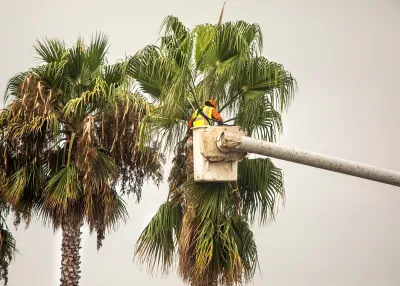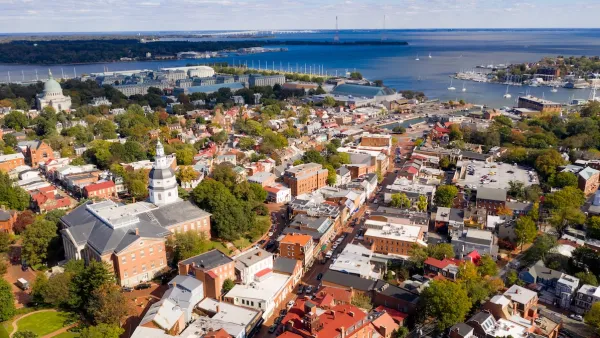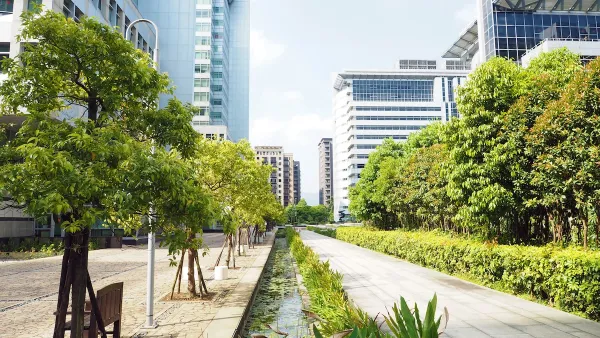Many of California’s 6 million urban trees are reaching the end of their lives. Arborists in Long Beach are turning them into useful lumber.

Arborists in California are developing a program to harvest and replace urban trees as they reach the end of their lives. As Noah Haggerty notes in an article in Governing, the project will prevent trees from falling onto and damaging homes or power lines while providing the state with a source of lumber.
Leaders at the Conservation Corps of Long Beach, which runs the current program, want to see it expand with more resources. “Right now, they’re working on and off with some borrowed equipment, but [executive director Dan Knapp] wants to see a crew of corps members dedicated to the project full time, with their own mill and kiln to dry the wood, and a storefront to sell it — all located on the same plot.” Trees milled by the Conservation Corps have already been used in homes and musical instruments.
Managing urban forests involves mapping every tree, understanding their conditions and ages, and knowing where trees are at risk from storms, pests, or encroachment, but such efforts require massive outlays of manual work. Experts say urban trees could replace as much as 10 percent of annual lumber needs in the United States, but many are currently being chopped up for mulch, reducing their carbon sequestration abilities.
FULL STORY: California Has 6M Urban Trees. What Happens When They Die?

National Parks Layoffs Will Cause Communities to Lose Billions
Thousands of essential park workers were laid off this week, just before the busy spring break season.

Retro-silient?: America’s First “Eco-burb,” The Woodlands Turns 50
A master-planned community north of Houston offers lessons on green infrastructure and resilient design, but falls short of its founder’s lofty affordability and walkability goals.

Delivering for America Plan Will Downgrade Mail Service in at Least 49.5 Percent of Zip Codes
Republican and Democrat lawmakers criticize the plan for its disproportionate negative impact on rural communities.

Test News Post 1
This is a summary

Test News Headline 46
Test for the image on the front page.

Balancing Bombs and Butterflies: How the National Guard Protects a Rare Species
The National Guard at Fort Indiantown Gap uses GIS technology and land management strategies to balance military training with conservation efforts, ensuring the survival of the rare eastern regal fritillary butterfly.
Urban Design for Planners 1: Software Tools
This six-course series explores essential urban design concepts using open source software and equips planners with the tools they need to participate fully in the urban design process.
Planning for Universal Design
Learn the tools for implementing Universal Design in planning regulations.
EMC Planning Group, Inc.
Planetizen
Planetizen
Mpact (formerly Rail~Volution)
Great Falls Development Authority, Inc.
HUDs Office of Policy Development and Research
NYU Wagner Graduate School of Public Service





























